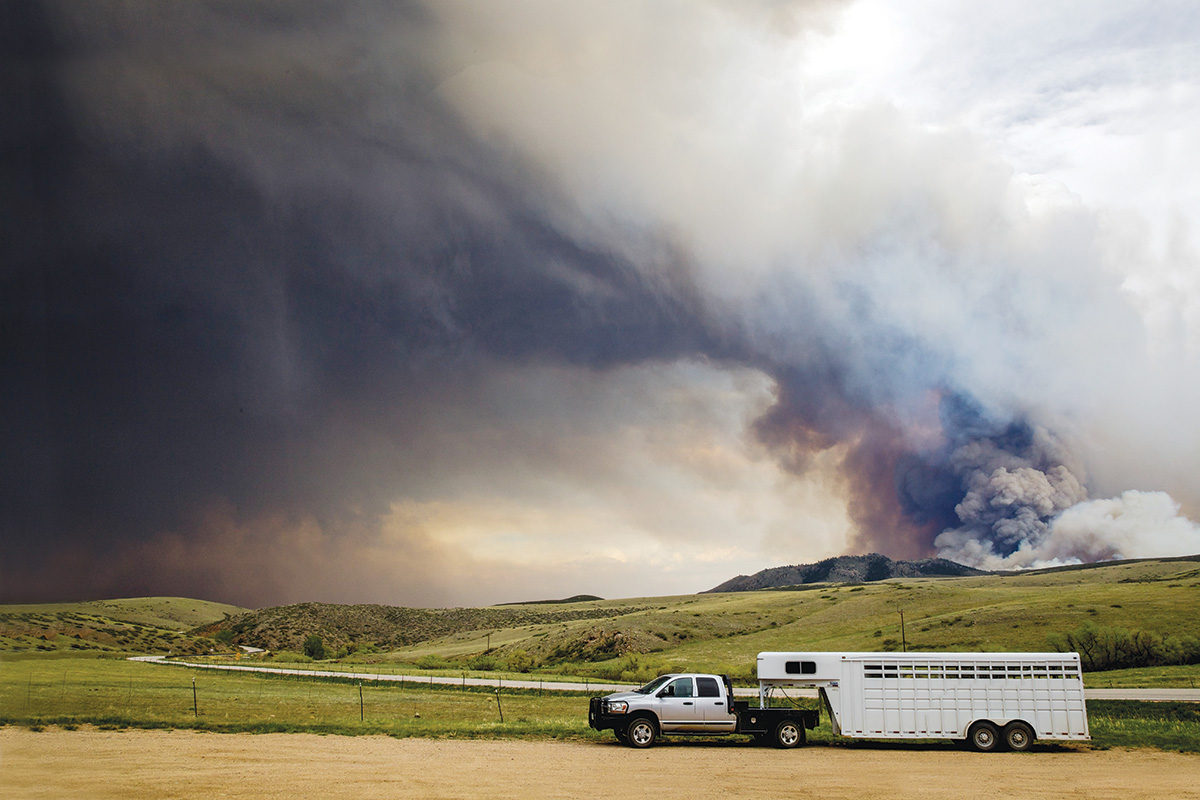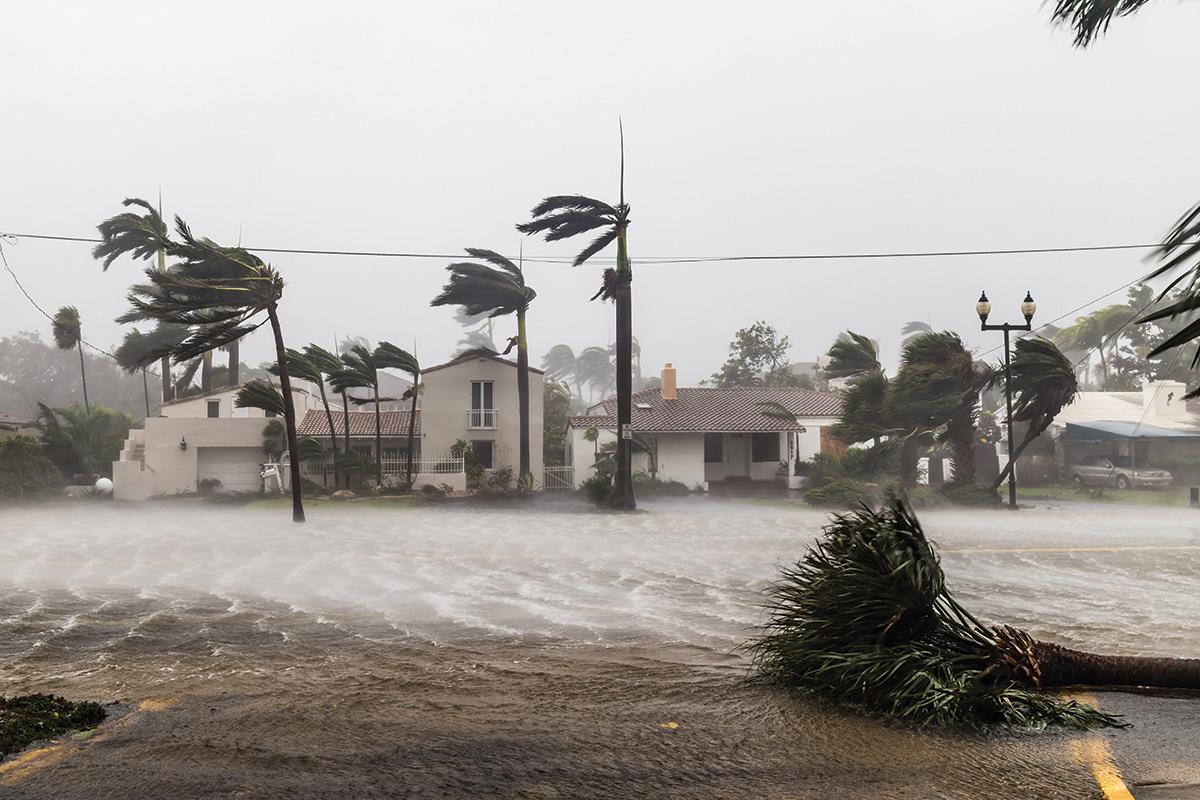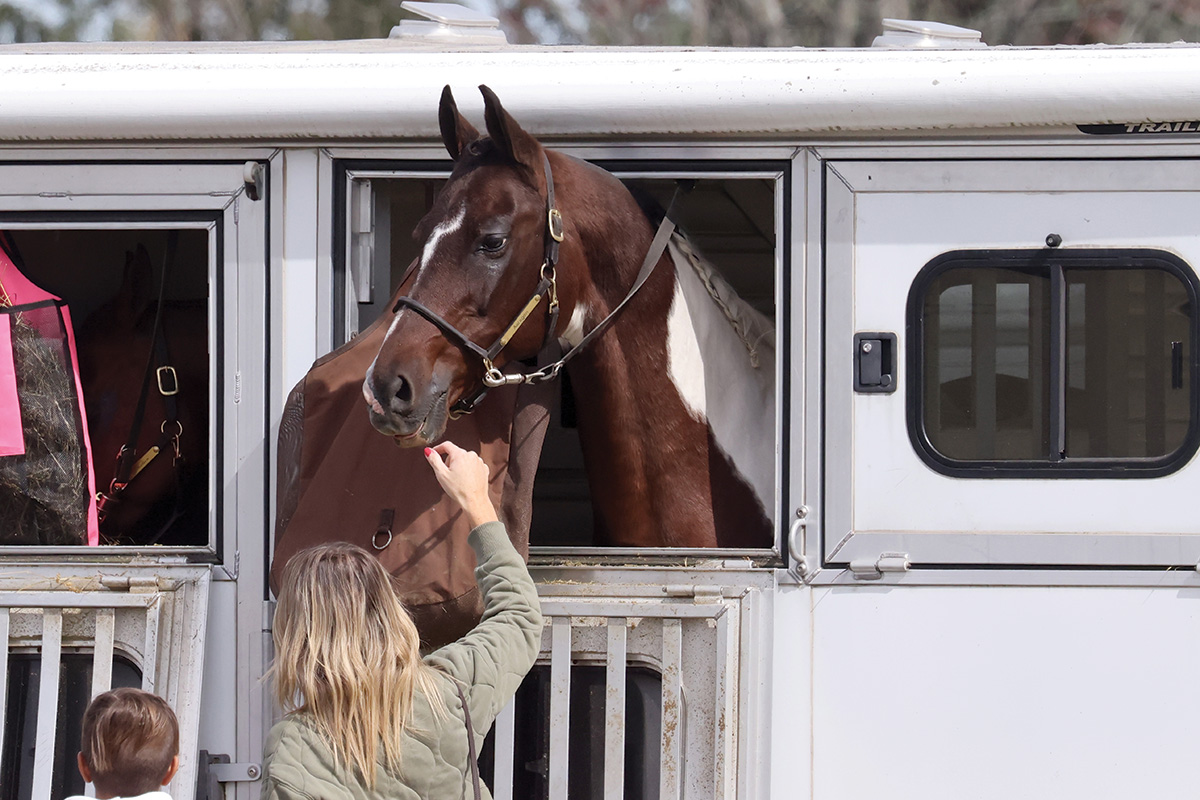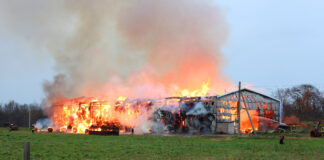
Each year, hurricanes, wildfires, and severe storms force thousands across the country to evacuate their homes. When preparing for a potential natural disaster, it is best to follow the adage of “expect the best but prepare for the worst.” Taking the time now to make an emergency and natural disaster preparedness plan for your family—including your horses and other animals—can be lifesaving.
Startling Natural Disaster Statistics
Of those who left at least one pet behind, nearly 30 percent cited not having enough time when the disaster struck as their reasoning for doing so, further emphasizing the need to prepare for an emergency in advance.
“We want to remind horse owners to always bring your horses and other animals with you if you need to evacuate,” says Christie Schulte Kappert, senior director of ASPCA Equine Welfare. “Leaving a horse or pet behind can expose them to numerous life-threatening hazards, including the inability to escape the impending emergency—such as flood waters, fires, and high winds—as well as having no access to fresh food and water for an unknown period.”
Horse Preparedness Before the Disaster
Your horses should be as equally prepared for a disaster emergency as your facility. The ASPCA’s Christie Shulte Kappert makes the following recommendations to ensure their readiness:
◆ Horses should be accustomed to wearing a halter.
◆ Practice loading on a trailer during calm conditions so horses are on autopilot during an emergency.
◆ Horses should be accustomed to being handled by strangers.
◆ Work with your neighbors or barn mates to practice loading each other’s horses so they are used to multiple types of trailers and handlers.
Horse Identification
In the case that you and your horse become separated during an evacuation, you will need to mark him with some sort of identification so you can be reunited later.
According to Schulte Kappert, microchips become a vital lifeline after times of disaster or other unforeseen events.
Once a chip is implanted, be certain to register it with the microchip’s manufacturer, as without registration, the microchip is not linked to any useful data. If you purchase a microchipped horse, be sure to update the personal contact info.
If microchipping is not an option, in an emergency Schulte Kappert recommends braiding an ID clip or luggage tag into your horse’s mane or tail or painting your phone number on his side with non-toxic paint.
In instances where microchipping is not available, tattoos can make a good second choice during non-emergency situations.
Emergency Kit
The ASPCA recommends that the following items be included in your natural disaster or emergency preparedness kit:
◆ Contact information for yourself and a confirmed emergency caretaker.
◆ Addresses and directions to local or regional sheltering options.
◆ Tack/equipment checklist, extra lead ropes, and extra halters.
◆ Veterinary records, including a current Coggins.
◆ Paperwork proving your ownership of your horse (branding papers, microchip registration, photos).
◆ A seven- to 10-day supply of feed, medications, and water and clean buckets.
◆ An equine first-aid kit that includes items like bandages, bandage scissors, and any necessary medications.
Faster Response Time
Severe weather events are stressful and scary for people and animals.
“Owners should create an emergency plan customized to their animals, location, facility and the likely scenarios that will cause an emergency; wildfire preparation is very different than a hurricane,” says Schulte Kappert. “Having a plan for your area’s possible scenario(s) will help you stay calm and act swiftly when the emergency arrives. Reach out to your county’s emergency management office or extension agents to follow guidelines about the disasters they plan to encounter and how to respond.”

For example, she says that many counties have designated fairgrounds as emergency shelters; you can use this type of information in creating your plan.
Working Together
Working together with your neighbors can also be extremely helpful. Schulte Kappert further recommends creating a phone tree/buddy system with other nearby horse owners and local farms.
Consider teaming up with other horse owners to pool your resources, including sharing trailer space and hay, and share your evacuation plans in advance.

“This is especially important for owners who board at a public facility or don’t own a trailer,” she says. “If you board, check with the stable owner about their emergency management plans and make sure you and your horse are prepared to respond accordingly.”
Schulte Kappert also recommends having a plan in place in the event you are away from home when evacuation orders are issued.
“Identify an emergency caretaker for your horse and other animals in advance and provide them with your plan,” she says.
Trailer Preparations
Another part of your emergency natural disaster preparedness plan should include making certain that your trailer is ready for transport at any time. Any time you may need to haul your horse, it’s important to inspect your trailer and its tire pressure, brake battery, and safety chains or cables.
It’s critical to have a trailer big enough for all your equines, including a place to tether them inside. If you have advance notice of an impending disaster, hook up your trailer ahead of time.
Act Swiftly
Whether it is you or a caretaker, it’s important to act promptly once evacuation orders have been announced. Schulte Kappert advises planning as if you may not be allowed to return home for at least seven to 10 days. She says that you should follow the instructions of local and state officials and evacuate as soon as possible, as it may take additional time to load your horses, other animals, and supplies.
Emergency and natural disaster preparedness does not have to be a daunting task. Instead, having a plan in place can help to make an emergency less frightening for everyone.
True StoryRachel Corbman, Director of Equine Services at Colorado Horse Rescue, an ASPCA Right Horse Adoption Partner, shared this true story of why equine disaster preparedness is so important. “When we needed to evacuate our herd of 60 from Colorado Horse Rescue (CHR) due to wildfire and smoke, it was crucial that we quickly and calmly identified priorities and delegated tasks to our staff and volunteer team. “Leadership first assigned each of our staff members to help oversee a general function: evacuating the horses from CHR, accepting the horses at the evacuation site, or supporting with removal of intellectual property (computers, brand inspections, tack, farm vehicles, et cetera). “Simultaneously, one of the team members on site at CHR started calling our emergency contacts list, which includes people who we trust to both handle our horses and/or those who have road-safe trucks and trailers to provide transportation. CHR’s fleet of trucks and trailers were also in use. “For our large herd, it was important for us to record as much of what was happening as we could. This included the name and contact information of each driver, which horses they hauled, and where they went. (In some cases, you may have more than one evacuation destination, which we did.) “All horses were also painted on the hip with ‘CHR’ in large letters. We sent bonded horses together and chose to send horses with special needs (dietary considerations, medications, et cetera) to private residences rather than the main evacuation site so they could have personal oversight. “On the receiving end at the primary evacuation site, volunteers were also recording which horses had arrived, ensuring that all horses were accounted for. “We were fortunate that we had enough time to do all of this, which may not always be the case. It’s important to consider your situation and listen to law enforcement. “An emergency can be dealt with most successfully when you’ve prepared ahead of time, and having plan to rely on will keep you and your horse as safe as possible during a disaster.” If you’re a Colorado front range local, CHR’s Emergency Preparedness Clinics in partnership with the Boulder Office of Emergency Management are free to attend; visit chr.org for more info. |
Emergency and Natural Disaster Preparedness with Horses: Key Takeaway
Natural disasters can strike without warning, and preparedness is essential to ensuring the safety of both your family and your horses. By taking proactive steps now to create a comprehensive emergency plan for your animals, you can minimize the risks and stress that come with facing a crisis. Stay informed, stay prepared, and stay safe.
This article about horse emergency and natural disaster preparedness appeared in the September 2023 issue of Horse Illustrated magazine. Click here to subscribe!





